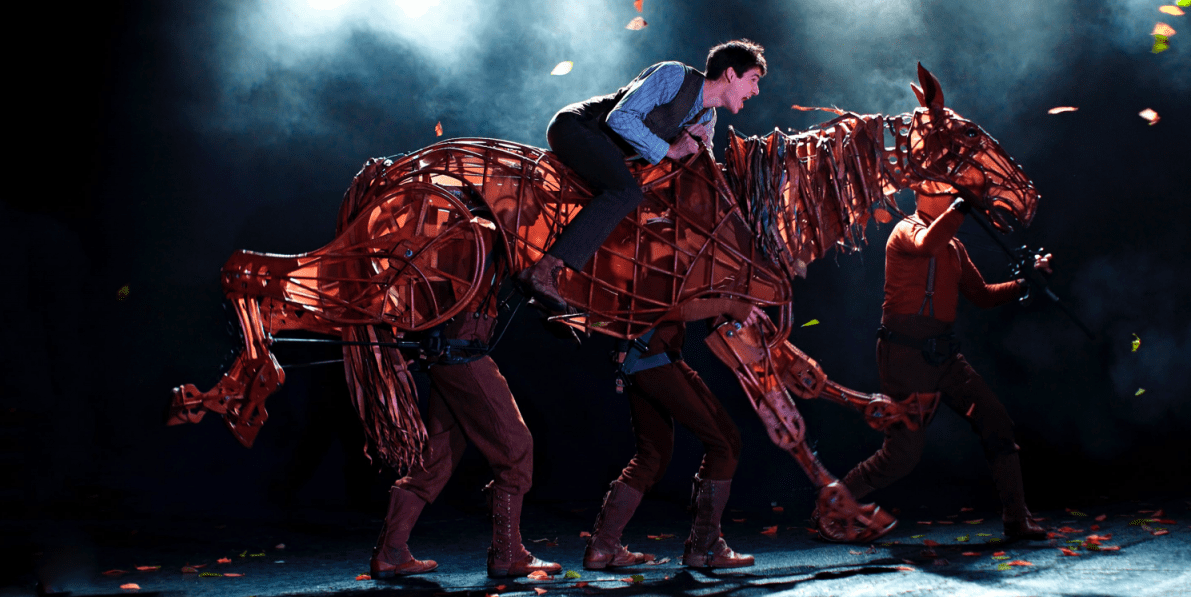War Horse is a very special and remarkable piece of theatre. Probably influenced by Julie Taymor’s thoughtful use of puppets in her innovative approach to staging The Lion King, the National Theatre created a theatre piece about the use of animals in war that pivots on astonishingly vivid puppetry for the horses (and some other creatures such as a goose and buzzards, etc). This new revival of the play for a touring production also has some very fine and evocative video on the stage for everything from bucolic farmland to bleak, war-torn World War I landscapes of Northern France, to exploding bombs. It was revived, suitably, as part of the commemorations of the centenary of the end of World War I in 2018.
For sheer theatrical impact this production cannot be faulted and deserves a full five stars. It is a strong piece of theatre. At times you feel immersed in World War I battles. The company is large, the music is also an important element in the staging, including excellent choral work by the company and the folk singing of Ben Murray. All the parts are well played, everyone is convincing, whether playing British country folk or German soldiers or civilian victims of the war.
This is a tight, sympathetic revival that lives up entirely to the reputation of the show and will be touring the UK and internationally throughout 2019 and 2020. The show is now 12 years old, but this version is completely fresh, engaging and gripping. It has a fluidity and presence that are exceptionally memorable.
The story itself is fairly predictable in its use of motifs and plot devices. The devotion of the main character to his horse has something of any “animal and his person” tale – a kind of Lassie Come Home, only this time about a horse. Scott Miller plays Arthur Narracott, making him the immensely sympathetic and appealing human centre of the drama. The fact that the horse is co-opted to be a war animal shifts us to something that is more thought-provoking and unusual, but also calls forth the familiar tropes that represent the awfulness, brutality and barbarity of World War I, the hell of the trenches, and the dehumanization of the soldiers. It also contrasts the sensitivities of some against the brutal thuggery that is evoked in others. The show is none the worse for having these recognizable elements. Christopher Naylor, Matthew Booth, Jonathan Cobb, Natalie Kimmerling and Kenton Thomas are among the actors who stand out because they have somewhat larger parts; but every single player, as I have said, makes an excellent and very full contribution.
Finally the skill of the puppeteers must be singled out for praise. It is breath-taking at times, even momentarily making you forget you are watching puppets being manipulated and not actual animals. The minutiae of the animal movements is vividly reproduced. Marianne Elliott and Tom Morris have directed this revival to perfection. The puppet designs by Basil Jones and Adrian Kohler and the way the twelve puppeteers who play Joey and Topthorn (in rotation at different performances) and the other puppeteers do their work is wonderful to behold and worth the price of admission alone. Ten million soldiers died in World War One and eight million horses. This show evokes those sacrifices and also the impact on ordinary individual lives in memorable fashion.

